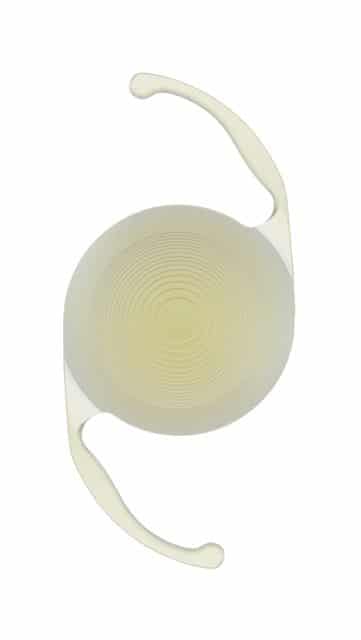Fort Worth-basded Alcon announced Aug. 27 its initial commercial launch and Food and Drug Administration approval of the first trifocal lens for U.S. patients undergoing cataract surgery.
The PanOptix lens is clinically shown to deliver an exceptional combination of near, intermediate and distance vision while significantly reducing the need for glasses after surgery, Alcon said in a news release.
PanOptix is already one of the leading presbyopia-correcting intraocular lenses in more than 70 countries and is designed for today’s active lifestyles, from viewing mobile devices and computer screens to high-quality distance vision in a range of lighting conditions, the release said.
Presbyopia is the gradual loss of the ability to focus on nearby objects and is a natural, often annoying part of aging, according to the Mayo Clinic.
More than 4 million cataract surgeries are performed each year in the U.S., the Alcon release says, and that number is projected to increase by more than 16 percent by the end of 2024. The presbyopia-correcting IOL market is expected to grow 60 percent by the end of 2024, Alcon said.
“The U.S. ophthalmology community has been eagerly awaiting FDA approval of PanOptix. While participating in the clinical trial, I saw first-hand the impact of this lens on my patients,” Kerry Solomon, M.D., Carolina Eye care Physicians and a PanOptix clinical trial investigator, said in the Alcon release.
A cataract is a cloudy area in the natural lens of the eye that affects vision. As a cataract develops, the eye’s lens gradually becomes hard and cloudy allowing less light to pass through, which makes it more difficult to see, Alcon said.
The vast majority of cataracts result from normal aging, but radiation exposure, taking steroids, diabetes and eye trauma can accelerate their development. Cataracts are the most common age-related eye condition and the leading cause of preventable blindness.
Twenty million people in the U.S. age 40 and older have cataracts. Cataracts are treated by removing the eye’s cloudy natural lens and surgically replacing it with an intraocular lens or IOL. More than 98 percent of cataract surgeries are considered successful, and patients typically can return to their normal routines within 24 hours.








